This article was originally scheduled to be published on the Iron & Air website in early February. Sadly, the publication shuttered after more than 10 years of inspiration on February 3, 2023. Kudos to Adam Fitzgerald and Gregory George Moore for allowing Henri and I to contribute the past year.
It only took six generations of the Ford Mustang before my first opportunity to get behind the wheel was offered. For a kid whose movie-watching generation thrilled at the 10-minute, 53-second car chase with Steve McQueen driving a 1968 Mustang Fastback through the streets of San Francisco in the Peter Yates cop drama Bullitt, it was like time standing still as I drove a 2022 Mustang coupe through the same city on my way to Fort Baker across the Golden Gate Bridge for a photoshoot before blasting south and up Twin Peaks to round out a perfect day.
Based on the 1963 novel Mute Witness by Robert L. Fish, Bullitt (1968) won the Academy Award for Best Film Editing, and many have said Frank P. Keller’s deft hand at stitching together three weeks of footage made the city of San Francisco a “character” in the film as the green Mustang and black Dodge Charger raced through Bernal Heights and the Mission District (local authorities did not allow the crew to film on the Golden Gate Bridge).
And while McQueen’s million-dollar mug was caught on camera behind the wheel, it was his stunt coordinator Carey Lofton and usual stunt driver Loren Janes doing the tough high-speed wheeling. Two 390 cubic-inch V8 Mustang GT Fastbacks with four-speed manual transmissions (and 325 hp) were purchased by Warner Bros for the film, produced by McQueen’s Solar Productions. Veteran racer and technician Max Balchowsky heavily modified the cars’ suspension, brakes and engines for aggressive driving and jumping. One of the cars was sold at Mecum Auctions for $3.7 million in 2020.
History of the Mustang
In continuous production since 1964, the Mustang is currently the longest-produced Ford car nameplate. Currently in its sixth generation, Mustang is the fifth-best selling Ford car nameplate. The namesake of the "pony car" automobile segment, the Mustang was developed as a highly styled line of sporty coupes and convertibles derived from existing model lines, initially distinguished by "long hood, short deck" proportions.
Originally predicted to sell 100,000 vehicles annually, the 1965 Mustang became the most successful vehicle launch since the 1927 Ford Model A. Introduced on April 17, 1964, over 400,000 units sold in its first year; the one-millionth Mustang was sold within two years of its launch. In August 2018, Ford produced the 10-millionth Mustang; matching the first 1965 Mustang, the vehicle was a 2019 Wimbledon White convertible with a V8 engine.
The success of the Mustang launch led to multiple competitors from other American manufacturers, including the Chevrolet Camaro and Pontiac Firebird (1967), AMC Javelin (1968), and Dodge Challenger (1970). The Mustang also had an effect on designs of coupes worldwide, leading to the marketing of the Toyota Celica and Ford Capri in the United States (the latter, by Lincoln-Mercury).
From 1965 until 2004, the Mustang shared chassis commonality with other Ford model lines, staying rear-wheel drive throughout its production. From 1965 to 1973, the Mustang was derived from the 1960 Ford Falcon compact. From 1974 until 1978, the Mustang (denoted Mustang II) was a longer-wheelbase version of the infamous Ford Pinto (!). From 1979 until 2004, the Mustang shared its Fox platform chassis with 14 other Ford vehicles (becoming the final one to use the Fox architecture), a dark time for the Mustang with several compromised models shown on dealer floors and lagging sales, as Ford realized profit centers with minivans, SUVs and pick-up trucks instead.
Since 2005, Ford has produced two generations of the Mustang, each using a distinct platform unique to the model line, bringing it closer to the original design ethos 50 years prior, creating a desirable American muscle car once again.
Sixth Generation
The sixth generation Mustang (internal project code name S-550) was unveiled on December 5, 2013, concurrently in Dearborn, Michigan; New York, New York; Los Angeles, California; Barcelona, Spain; Shanghai, China; and Sydney, Australia..
Changes include a body widened by 1.5 inches and lowered 1.4 inches, a trapezoidal grille, and a 2.75-inch lower decklid, as well as new colors. The passenger volume increased to 84.5 cubic feet, the wheelbase is still 8 ft. 11.1 in. (107.1 in.), and three engine options were available: a newly developed 2.3 L EcoBoost 310 hp four-cylinder introduced to reach high tariff global markets like China, 3.7 L 300 hp V6, or 5.0 L Coyote 435 hp V8, with either a Getrag six-speed manual or six-speed automatic transmission with paddle shifters.
A new independent rear suspension (IRS) system was developed specifically for the new model.
My Verdict?
Sliding behind the wheel with an iconic Mustang emblem in the center brought a twinge of historic chill to my bones. An avid motorcyclist and cyclist, my stick shifting days were a distant memory (15 years or so) after practical vehicle ownership (minivans and station wagons) put paid to that necessity. The only two stick shifters I’ve owned were a 1982 Chevrolet Chevette and a 1978 VW Campmobile. Had an opportunity to buy a 1978 Porsche 911SC Targa in August 1999, but necessity – and lack of space – prompted me to make one of my worst decisions and pass (owner was asking $10,000 at the time).
Driving a modern muscle car with modern suspension, brakes and wheels is a joy. The exhaust note and engine rumble turns heads, and the honks and waves from other Mustang owners on the street was something I typically get from other motorcyclists, not motorists. Validation that gas-powered twin turbo cars are still cool, even in the EV-marinated Silicon Valley.
My EcoBoost Mustang 6-speed tester came with a 2.3-liter I-4 engine delivering 310 hp and 350 ft.-lb. of torque with turbocharging, direct injecting and twin independent variable cam timing. The aggressive first gear springs off a standing start, with short shifts providing smooth full gear synchronization. Wasn’t hard to picture myself wearing a black turtleneck McQueen-style as I sped through San Francisco on my way to Twin Peaks.
Handling wise, the Mustang took tight corners and S curves smoothly, while the integral link independent rear suspension helps minimize body roll and isolate road imperfections for a responsive ride and precise handling. Aluminum-alloy rear knuckles and H-arms help reduce unsprung mass, something our photo assistant Jean appreciated while riding in the back seat.
Front suspension is handled by a double-ball-joint MacPherson strut with stabilizer bar, while the rear is integral-link independent with coil springs and stabilizer bar using hydraulic gas-pressurized, outboard-mounted shock absorbers on all four wheels.
Also, with available selectable drive modes, you control vehicle driving dynamics. Simply flick a toggle switch on the center stack, and handling and response are adjusted based on your selection. Choices are Normal, Snow/Wet, Sport, Track or Drag Strip. I opted for Sport.

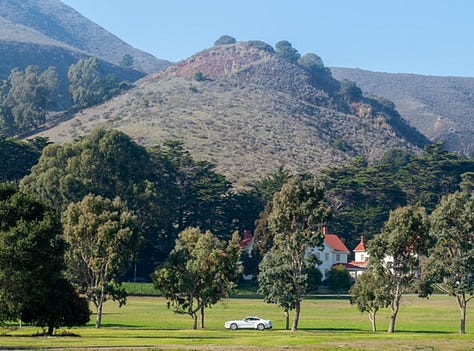
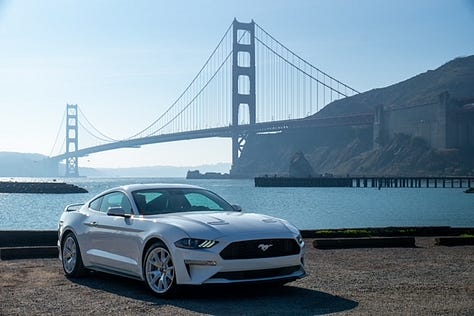
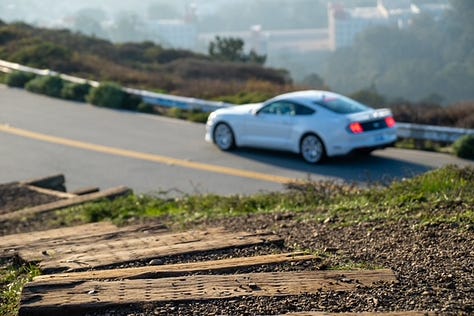

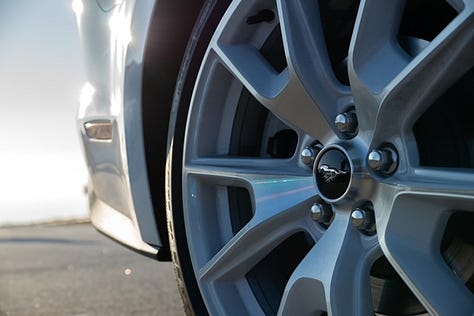
My tester weighed 3,492 lbs, with a reported combined gas mileage of 24 mpg. MSRP with upgrades was $40,335 with destination and delivery charges. The experience made me put serious thought into buying a 1966 Mustang V8, but practicality—and familiarity—prompted a more familiar investment in vintage BMW motorcycles instead.
Mustang No. 1 and 1,000,001
On April 14, 1964, Eastern Provincial Airways Captain Stanley Tucker walked into the George Parsons Ford showroom in St. Johns, Newfoundland, with money burning a hole in his pocket as he pursued the new Ford Mustang. Parsons was reluctant to sell because it was the only Mustang he had in stock, but Capt. Tucker persuaded the young salesman, Harry Phillips, to sell it and make it available three days before April 17, when Ford officially released the Mustang to the world. Tucker took serial number 5F08F100001 home and, for a short time, was the general public's only Mustang owner. At the time, he had no idea he had purchased the first Mustang ever ordered for approximately US$2,368 (equivalent to $20,362 in 2021).
"For a long time, I was the only Mustang owner in Newfoundland. It was quite an experience," Capt. Tucker recalled years later. "Many times another motorist would force me to the side of the road to ask me about the car – what it was, who made it, how I like it and how much it cost?"
Once it became known that Mustang Number One had been inadvertently sold, Ford officials reached out to Tucker to try to buy it back. Tucker declined the request, and spent the next two years putting some 10,000 happy miles on his pony car. By early 1966, when nearly one million Mustangs had been sold and the car's status as a Ford landmark was secure, the Ford Motor Company called again. This time, Ford offered Tucker a worthy trade: in exchange for returning Serial Number One, he could have the One-Millionth Mustang free of charge, equipped to his specifications. Sticker price was approximately US$3,000 at the time.
Tucker agreed and, when filling out the order, covered the entire option sheet with a single large “X”. The car was a silver frost convertible with a black top, a deluxe black interior with a wood-grain steering wheel, styled steel wheels, Cruise-O-Matic transmission, air conditioning, stereo sonic tape player, disc brakes and rally pack. It even had a Philco television. The only extra he didn't take was the High Performance 289 engine – it carried a shorter warranty period.
Tucker traveled to Dearborn, Michigan, where Ford wined and dined him in the company of executives such as Mustang project leaders Lee Iacocca and Don Frey. On March 2, 1966 – two months before I was born – Tucker's loaded '66 Mustang convertible rolled off the line amid fanfare and excitement. Capt. Tucker posed for photos with his Mustang. Meanwhile, FoMoCo reclaimed Tucker's much-loved Serial Number One and placed it in The Henry Ford Museum where it is currently on display.
After taking delivery of the Millionth Mustang, it became Tucker’s daily commuter in all kinds of weather, including nasty Canadian winters. The elements took their toll as Tucker drove the Mustang thousands of miles, even pulling a trailer with it. By the time the 1970s came around, Tucker knew it was time to sell the Mustang and opt for something new. He sold the car to his mechanic and never saw it again. Tucker died at 77 in 2008.
Do you have a Ford Mustang story to share?




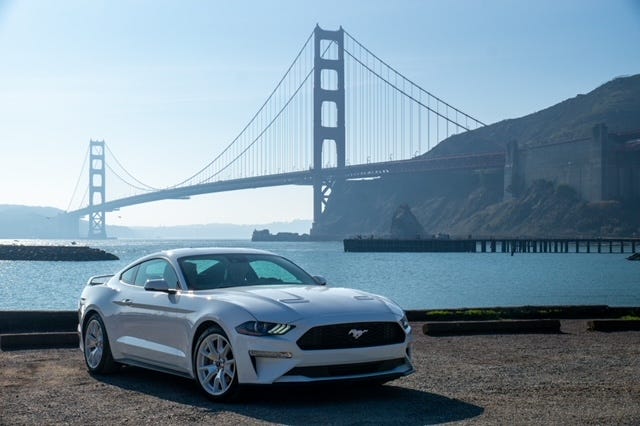
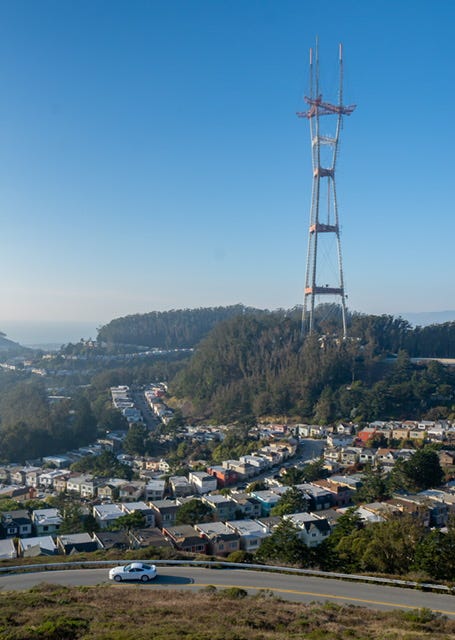

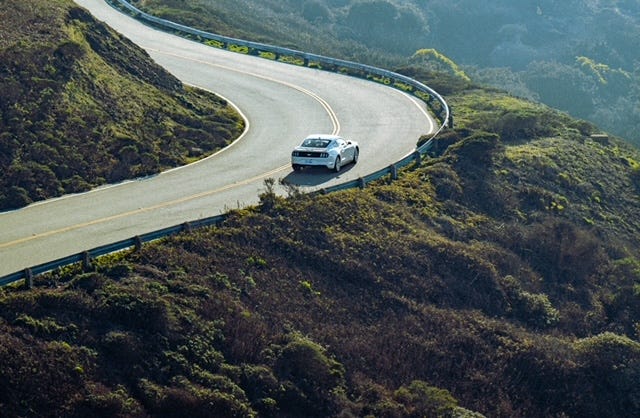


Great read! The history is fascinating - especially the Pinto part. Disappointing at the time but kind of funny in hindsight.
Find it hard to believe that you didn't purchase a black turtleneck for the photo shoot:).
what would #1 be worth now? For that matter #1,000,000